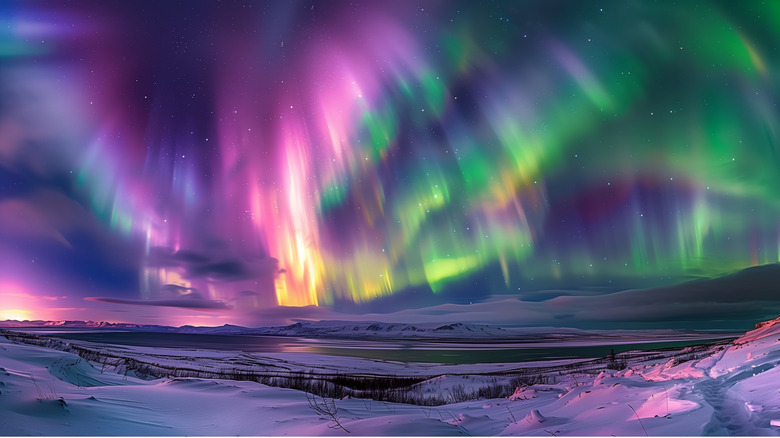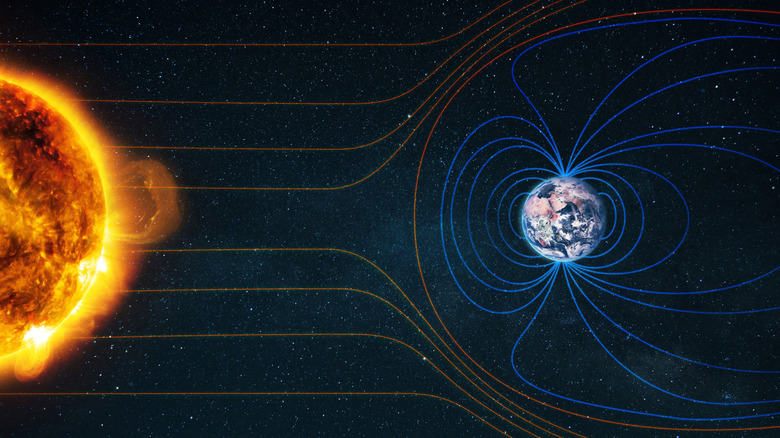Why Can't All States Usually See The Northern Lights?
Auroras are one of the most spectacular displays of color in the sky and can be seen in the northern and southern hemispheres. The phenomenon in the northern hemisphere is called the aurora borealis, while the display in the southern hemisphere is referred to as the aurora australis. Now, it's clear why the southern lights aren't visible in the States because of their location. The reason the northern lights can be seen in some states but not others, though, is more complex because of the Earth's magnetic field and poles.
First, it's helpful to understand how auroras happen. They're the result of the sun emitting streams of electromagnetic particles into space. This solar wind affects Earth in different ways, such as interfering with communications equipment and satellites. While the Earth's magnetosphere offers protection from solar wind by deflecting its harmful energy, it's not a perfect deflector and instead captures some of the charged particles, drawing them toward the north and south poles.
Because of how the magnetic field works, the particles are pulled down in an oval shape, where they collide with gas atoms and molecules — mostly nitrogen and oxygen — and build up energy that releases in the form of light (photons). As Earth rotates, the auroral ovals distort and move in the atmosphere between 60 and 75 degrees latitude and from 60 to 150 miles above the ground. When the solar winds are stronger than usual, though, the magnetic field and atmosphere are flooded with more electrically charged particles, making the aurora borealis extend farther south than normal — sometimes as far as Arizona. The Carrington Event of 1859, for instance, was the biggest solar flare recorded in history and meant that the northern lights were visible in all the states, including Hawaii!
The northern lights aren't always visible or in every color
Along with not usually being able to see the northern lights in all the states, you likely won't be able to see the incredible display of color at certain times of the year. Even if your physical location is between 60 and 75 degrees latitude (like Alaska), you won't be able to see the aurora borealis from May to July thanks to the summer sun never setting for long. Also, you won't be able to see the colorful phenomenon between 4 a.m. and 5 p.m. — unless you live somewhere where it's dark 24/7 — because the sun is brighter than the aurora's light.
Instead, the best time to see the northern lights is around the spring and autumn equinoxes — which occur in March and September, respectively. That's because, as Earth orbits the sun, there's a shift in the angle of the magnetic field relative to the solar wind. During these months, "magnetic cracks" let in a higher amount of charged particles that create an auroral storm cycle. These months also have milder temperatures and clearer, cloudless skies compared to other months. If you can stand the cold, the dark skies and longer evenings of November through February make it easier to see the aurora borealis between 9 p.m. and 2 a.m., although 11 p.m. to midnight is the optimal viewing hour.
Keep in mind that you may see different types of northern lights — arcs, bands, coronae, curtains, patches, and rays. Plus, they mostly appear in shades of green as the solar wind particles clash with oxygen. You can see red, though, when the particles react with oxygen at higher-than-usual altitudes. Shades of blue and purple are also possible when the particles mix with nitrogen at lower-than-usual altitudes.

